October 21, 2002
Day 1 - Full Moon in Aries Meditation
In the energies of the full moon,
find a place that is peaceful and quiet,
either indoors perhaps where you can view the full moon,
or outdoors when the moon in high in the heavens.
Prepare as you would for meditation.
This is an exploration in consciousness.
Envision yourself slowly floating toward the moon.
It's energies become magnetic as you get closer.
Alas the moon is before you.
You enter the full moon,
only to discover that it is not the full moon at all,
but a creational source of light,
whose energies surround you.
Slowly you watch as this electromagnetic display of energy
surrounds you, until you become one with it.
It is here that all knowledge is stored and created.
You have entered the consciousness that creates our reality.
Now is your time to connect with creation, and your part in it.
Please stay as long as seems comfortable.
Open your mind and go beyond human thoughts.
You may see and hear things beyond your imagination,
some beyond your ability to manifest into thought-forms
which make no sense to your physical mind, yet are connecting
with your genetic encoding, to awaken and activate.
October 22, 2002
Day 2 - Alien Connections
You are about to embark on an extraterrestrial journey.
Prepare as you would for meditation.
This is an exploration in consciousness.
Envision yourself moving beyond planet Earth.
Look below as Earth slowly fades into the distance.
Soar past the moon as you move into outer space.
Note the celestial objects you see as you go deeper and deeper...
Soon you will reach your destination.
You may see yourself on another planet, a spacecraft,
moving into a wormhole or black hole, or another grid program.
Once you reach you destination, contact will be made.
October 23, 2002
Day 3 - You Are The Alchemist
Turning base metal into gold is a metaphor for
the evolution of consciousness in the alchemy of time.
It is the activation of your DNA encoded memories as your
consciousness spirals into higher/faster moving frequency.
Prepare as you would for meditation.
Visualize a wizard in front of you.
He hands you a piece of metal.
Your body connects with its energies.
As you hold it, a transformation begins.
You feel energy shifts in your physical body.
Take your time experiencing these changes and what they mean.
They are an alchemical process awakening you on many levels.
October 24, 2002
Day 4 - Becoming Invisible
How much does your brain actually perceive around you? When you are in a room full of people, how many do you remember, the rest being more or less invisible, your consciousness mind not connected.
Everywhere we go, there are spirits in other realities moving in, around, and sometimes through us. They are invisible to us as they are in another frequency, one that we are not tuned into. It is like a TV, you watch one channel, but to see another program, your switch to another channel. Some TV set are built so you can see more than one image at a time, just as some people are able to see spirits and other realms whereas the average model/average person, is only set to one frequency at a time.
There is something called 'Human Involuntary Spontaneous Invisibility', in which someone disappears without explanation. It is all about shifting frequency, channels, we channel information.
Human invisibility has been written about for centuries. Indo-European and pre-Aryan shamanistic beliefs accompanied the peoples who eventually migrated into the Indus Valley (approx. 2,500-1,500 BCE). Here, men and women of great spiritual attainment, superior knowledge, and extraordinary powers came to be called rishis.
The Vedas, which form the basis of Hinduism, emanated from the teachings of the rishis. Starting around 1,000 BCE In these texts, we find descriptions of the rituals and techniques of the Hindu priests, sounding very much like the magical and shamanistic abilities of the old sorcerers, magicians and shamans
.
Later in Hinduism, around 700-300 BCE, we find the secret doctrines, called the Upanishads, which were written for students. Within the Upanishads, there is a section called the Yogatattva,which gives the rich mystical philosophy of the discipline and theory of practice for attaining knowledge of the essence of God.
A serious student of raja yoga was taught that certain supernormal powers, called siddhas, were a natural outcome of gaining mastery over one's mind and environment, and were used as valuable indications of the student's spiritual progress. One of these yogic siddhas was human invisibility.
Patanjali, author of the Yoga-sutra, which is one of the earliest treatises among the early Indian writings, attempts to describe the process whereby human invisibility occurred. He says that concentration and meditation can make the body imperceptible to other men, and "a direct contact with the light of the eyes no longer existing, the body disappears."
The light engendered in the eye of the observer no longer comes into contact with the body that has become invisible, and the observer sees nothing at all. There is not a lot written about how this occurs; the explanation of the process whereby invisibility was brought into being was most likely left up to the teacher to impart to the student directly.
From the thirteenth century on, numerous texts in Europe refer to similar abilities, performed by sorcerers and magicians who had the power to make themselves invisible, like the shamans (both ancient and modern), and the yoga masters in India. Some other cultures in which shamanism (and the ability to vanish) has played a major role are the Aborigines of Australia, the archaic peoples of North and South America, and the peoples in the polar regions.
Rosicrucianism started in Europe in the fifteenth century. Among the papers of that time, there are a number of them that talk about invisibility. A brother in the Rosicrucian fraternity wrote a paper on how to walk invisible among men, and there is evidence that this was being taught in those early days. H. Spencer Lewis, the founder of the Ancient and Mystical Order Rosae Crucis in San Jose, California, stated that one can gain invisibility with the use of clouds. He says that clouds or bodies of mist can be called out of the invisible to surround a person and thus shut him out of the sight of others. According to Lewis, this secret practice is still taught in the mystical schools of today. The written literature on this subject supports the statement that the cloud is the basis of the Rosicrucian invisibility secret.
John Macky was an early Masonic leader (the early Masons were believed to be an offshoot of the Rosicrucians). He taught a method whereby any man could render himself invisible. Another offshoot of the Rosicrucian fraternity, the 'Hermetic Order of the Golden Dawn,' left manuscripts describing the Ritual of Invisibility. These manuscripts talk about surrounding yourself with a shroud, which is described as looking like "a cloud."
It is said that Madame Blavatsky, of the Theosophical Society, witnessed this invisibility for herself and was actually given the secret, thereafter accomplishing this for herself on several occasions in front of witnesses. The literature on the Spiritualists in the U.S. shows that there is no doubt they, too, knew about the cloud and its creation.
What is this cloud? We are looking for something that is between empty space and actual physical matter, something unseen by the naked eye but very much in existence. The Rosicrucian manual tells us that the first form into which spirit essence concentrates preparatory to material manifestation is electrons. When spiritual essence gathers into very minute focal points of electrical charge (due to certain conditions), we have the creation of electrons. Science reports that such a cloud of free electrons will absorb all light entering it; it will not reflect nor refract light waves, nor are light waves able to pass through a human being. Consequently the observer¹s eye sees nothing there and the person surrounded by such a cloud is invisible. Since light is necessary for human sight, when there are no reflected or refracted light waves bouncing off a person and hitting the observer's retina, the person is not able to be seen and is not visible under normal circumstances.
How is this cloud created intentionally? That is difficult to say. There are references to and descriptions of invisibility and its creation in the writings of secret societies, but most people don¹t have access to these writings. One could go to India and become an apprentice or student of an Indian guru or teacher to learn these techniques, but that probably is not practical in modern life. To the everyday person, the knowledge of how invisibility works is a mystery.
With spontaneous involuntary invisibility it is possible that people are forming a light-absorbing, free-electron cloud around themselves. They are doing it unknowingly and without knowledge of the method. Perhaps they are able to master this skill in another reality which is affecting them here. Since some kind of focused mental thought process must be employed to make the cloud form around oneself, then it might be that these people are doing this unconsciously. Telekinesis is often done unconsciously.
People having these invisibility experiences seem to have higher than average psychic abilities. Possibly they are able to traverse other dimensions and command natural forces, knowingly or unknowingly. Researchers of the paranormal are having a field day as people are reporting experiences with what they term ghosts, angels, extraterrestrials, and interdimensional beings.
With practice, you can become invisible by learning to spiral your personal grid to higher frequency.
Begin by sitting very still, relaxing, taking a long deep breath.
Focus your energies on the electromagnetic energy field, the light field, auric field, that surrounds you.
Envision the particles in that light field speeding/spiraling upward so they no longer reflect your light.
Take your time.
If you are successful, you will disappear, the lasting effect varying.
I once shifted my grid while driving above the speed limit to avoid being detected by police radar. It must have worked, as I flew by undetected ... but on the other hand several other cars narrowly missed me as they didn't see me either. Gulp!
It is all about the movement of your consciousness, as all is perceived reality in the matrix of time. It is about mind over matter.
October 25, 2002
Day 5 - Creating a Plasma Ball
The human body is electromagnetic and electrostatic energy, often called an auric field. It responds to sound, light and color and changes from moment to moment.
The Kinetic energy of an object is the extra energy it possesses due to its motion. It is defined as the work needed to accelerate a body of a given mass from rest to its current velocity. Having gained this energy during its acceleration, the body maintains this kinetic energy unless its speed changes. Negative work of the same magnitude would be required to return the body to a state of rest from that velocity.
When you we rub your hands together very quickly, there is friction between the palms. This also occurs if the palms are not touching but in close proximity. Friction is the force of two surfaces in contact, or the force of a medium acting on a moving object (i.e air on an aircraft). It is not a fundamental force, as it is derived from electromagnetic forces between atoms. When contacting surfaces move relative to each other, the friction between the two objects converts kinetic energy into thermal energy, or heat. Friction between solid objects is often referred to as dry friction and between a solid and a gas or liquid as fluid friction. Internal friction is related to a body's ability to recover from external deformation. Contrary to popular belief, sliding friction is not caused by surface roughness, but by chemical bonding between the surfaces. Surface roughness and contact area, however, do affect sliding friction for micro- and nano-scale objects where surface area forces dominate inertial forces.
There are various techniques healers and energy workers use involving kinetic energy.
Potential Energy can be thought of as energy stored within a physical system. This energy can be released or converted into other forms of energy, including kinetic energy. It is called potential energy because it has the potential to change the states of objects in the system when the energy is released.
Informally, potential energy exists when there is a force that tends to pull an object back towards some original position when it is moved. For example, when a spring is stretched to the left, it exerts a force to the right so as to return to its original, un-stretched position. Or, suppose that a weight is lifted straight up. The force of gravity will try to bring it back down to its original position. The initial steps of stretching the spring and lifting the weight both require energy to perform. The principle of conservation of energy states that energy cannot be created or destroyed, so this energy does not disappear. Instead it is stored as potential energy. If the spring is released or the weight is dropped, this stored energy will reappear as kinetic energy as the restoring force ‹ elasticity in the case of the spring and gravity in the case of the weight - accelerates the object back towards its original position.
The more formal definition is that potential energy is the energy of position, that is, the energy an object is considered to have due to its position in space.
There are a number of different types of potential energy, each associated with a particular kind of force. Technically, any conservative force gives rise to potential energy. For example, the work of elastic force is called elastic potential energy; work of gravitational force is called gravitational potential energy, work of the Coulomb force is called electric potential energy; work of strong nuclear force or weak nuclear force acting on the baryon charge is called nuclear potential energy; work of intermolecular forces is called intermolecular potential energy. Chemical potential energy, such as the energy stored in fossil fuels, is the work of Coulomb force during rearrangement of mutual positions of electrons and nuclei in atoms and molecules. Thermal energy usually has two components: the kinetic energy of random motion of particles and potential energy of their mutual positions.
Creating a Plasma Ball Between the Palms of Your Hands
You can sit or stand for this activity.
Your hands should be clean, dry and room temperature.
Place your elbows close to your body or on a table in front of you.
Place the palms of your hands facing each other, between one and two inches apart, but not touching.
Rotate your hands slowly, in small circles, at first, than faster.
They will automatically move in separate directions.
Feel the energy moving between your palms.
You are building a plasma ball of energy.
When you stop moving your hands, hold them in a cupped position.
You should feel the plasma ball.
The intensity of the energy created between the hands varies from person to person and experience to experience.
For some people there will be little energy transferred, but for others
the effect of using this plasma ball can really move and shift things
around. Some people can throw the ball across a room, moving an object.
When you are finished, the energies may appear to dissipate or you may have to ground yourself
but placing your hands flat on the floor, or just allow them to dissipate.
Candles, The Power of the Flame
The flame represents the source of our creation, your inner light.
It speaks to us of the soul spark that is above and below, within and without, that which links us all together originating from the same source of thought consciousness. It is the light, your light, that which you seek.
You can give power and magical qualities to the flame, but the energies come from your consciousness.
Candle drippings viewed after a ceremony or meditation, will take shape and form and have meaning for you. They too are created out of the magic of your thoughts.
The power of the flame is neither male nor female but all and everything.
Candles and sacred flames are part of the myth and mystery of humanity's experience in the physical, always a reminder of our connection to source.
Candles are often used during religious and ritualistic ceremonies.
A candle melts until its flame is extinguished in the physical ... but a soul spark is immortal.
As we are all created by the flame of soul, therefore we all believe in magic at some level.
Somewhere in our souls is the knowledge that there is more than physical reality. All is magic and illusion.
Many people associate ceremonies using candles with the occult, black magic, witchcraft, etc.
Nothing is dark or negative unless it causes harm to someone or results in a negative reaction and most often originates from a dysfunctional soul.
Candle Magic has been around since the dawn of time, traced as far back as the Paleolithic era. It is a very powerful form of sympathetic magic.
You have to believe in the power of the candle if it is to work for you. Candle magic is usually part of a ritual but can be part of meditation or other exercises (see below).
There are many factors that play into the art of candle magic. Any type of magic that is performed is supposed to return to you three fold, whether it be positive or negative. Always keep the Wiccan Rede 'An harm to none do what thou wilt' in mind when considering your work. Always keep in mind that magic effect's the entire world around you. Be very careful what you ask for, for it may well come true. The wording in any type of magic must not be taken lightly, be very careful, concise, and precise, make sure you have covered all possible bases.
Some candle magic has to be repeated over a period of days. Therefore, you will want to place them in an area that will not be disturbed. Do not choose a place where there is a TV, radio noise or disturbances of any kind. Keep in mind to not put candles near curtains and such, as you would not want to burn your house down. Candle magic should always be performed in a low traffic area. That is why a bedroom is really nice for such work.
Your Altar:
You may use anything that has a flat top. Be creative. Cover the altar if you prefer. Although some magic specifies a color then what ever color is specified should be used. Again, be creative. Keep in mind that candle magic is usually done in condensed areas so keep things as simplistic as you can, especially your candlesticks and crystals.
Incense:
Incense is part of the process. The type / types that you use may be specified in a specific spell, if that is the case by all means use that. Research on incense fragrances and their effects is need here. Incense symbolizes Air, as the smoke rises our thoughts are carried up into the universe.
Preparing of the Practitioner:
Light a few candles, turn off the light and relax. Clear your mind.
Types of candles:
Any type of candle can be used for candle magic as long as it has been cleansed and consecrated prior to use. Although beeswax candles are higher in price than store bought candles, they are more powerful because they are produced from nature. As with any other tool, the candle made by the practitioner for a specific purpose captures the energy of the practitioner. Many experienced Witches will use only candles they have crafted themselves because of this.
Cleansing & Consecrating:
This is a very important step and should not be omitted. Cleansing removes all the negative energies that the candle has picked up along the way. As with all supplies you want your candles to be as free of psychic debris as possible. Submerge the candle in sea salt and ask for cleansing.
Dressing Candles:
Naturally candles have polarities. Everything in our program has positive and negative polarities, as it is an electro magnetically based program.
Dressing a candle is no more than putting your vibration, thoughts and outcome you want into the candles vibration force. [This works the same way with crystals and stones]. Dress the candle with oil. Use whatever oil you prefer or what a specific spell asks you to use. Rub oil on the candle in a downward motion from the top to the middle and then from the bottom to the middle.
To send something away, stroke the candle 7 times from the middle of the candle out to the ends. Always stroke the candle in one direction.
Dab the remaining oil from your fingers onto your third eye and on your breast bone [heart chakra]. Then state your intent or the purpose of the candle.
Now light the candle and let it burn down.
Some of the Reasons People Burn Candles
Talk to God
Obtain Money
Win the Love of Man or Woman
Settle a Disturbed Condition in the Home
Obtain Work
Conquer Fear
Conquer Addictions
Develop Understanding
Break up a Love Affair
Unfavorable Vibrations
Gain Prosperity
Change One1s Luck
Develop Spiritual Understanding
Learn the Truth
Stress Management, Soothe and Quiet the Nerves
Regain or Retain Health
Gain Power Over Others
Arouse Discord or Anger or Jealousy in Another
Awaken Spiritual Understanding in Another
Protect Against Evil Influences
Stop Being Slandered
Achieve Goals
Win or Hold Happiness
Attain and Maintain Success
Heal an Unhappy Marriage or Other Family Situations
Other
Candles
Melting candles that drip, can produce patterns from the dripping that can have meaning for the person near the candle.
Candle burning is one of most simple forms of magic. It can be performed most anywhere and candles are really easy to purchase. The basic principles are to concentrate, visualize and focusing (willpower) on the candle as a symbol.
Candle magic can be used for overcoming bad habits, attracting things, settling disturbing atmospheres, protection, regaining health, developing psychic powers, etc.
______________________________________________________
Choosing a Candle
People chose the frequencies of candles by color and shape.
White, spiritual blessings, purity, healing, rest
Light blue, peace, harmony, joy, kindly intentions
Dark blue, moodiness, depression, unfortunate circumstances
Green, money, gambling luck, business, steady work, good crops
Yellow, devotion, prayer, money (gold), cheerfulness, attraction
Red, love, affection, passion, bodily vigor, luck
Pink, attraction, romance, clean living
Purple, mastery, power, ambition, control, command
Orange, change of plans, opening the way, prophetic dreams Brown, court cases, neutrality
Black, repulsion, dark thoughts, sorrow, evil, harm
Metallic gold, money, gambling luck, prosperity, success
Often two colors are used to work together to create magic, affect energies.
Candles vary in shape depending on its purpose in candle burning / magic
 |
| Restore Balance |
 |
| Spiritual Connection |
 |
| Rainbow Bridge |
 |
| Celestial |
 |
| Four Elements |
 |
| Love |
 |
| Marriage |
 |
| Animals |
__________________________________________________________________________________
Working With Candles
Find a quiet place, free of disturbances, people, phones, pets, fans, air conditioners that might disturb the flame.
You may use soft background music.
Some people enjoy using incense.
Make clothing comfortable, remove eyeglasses or contacts.
Make the room dark, the only light being the flame of a candle used. I prefer spiral candles or large thick candles that last
for hours.
Sit in a relatively comfortable chair with the candle approximately an arm's length distance in front of you, perhaps at a
kitchen table.
You could also place the candle on a coffee table then sit on the floor, as many people are comfortable in the lotus
position.
This can be a method of self-hypnosis. In this case send your a message that you are to return to consciousness after
your messages / messages have been given.
You can state your intention before you begin focusing on the flame of the candle, such as, "I want to see myself in a
past life that links to this one."
Now gaze at the flame. Look at the flame. Breath deeply and evenly, in through the nose and slowly out through your
mouth.
As you look at the flame, you can see that it is actually made of the colors of the rainbow. Subtle shades of red glow at
the very tip of the flame. Your passion, your physical body are being left behind, as a faint reminder of who you are.
The orange that follows spans a short time on the flame. Your anchor on this earth, also reminds you that there is a life
on this plane.
Then, the yellow, the most prevalent, the most powerful part of the flame draws your attention. It burns as your
creativity, yearning to burst free and shower you with its inspirations.
Your eyes follow down and see the tiny segment of green, your center, your growth. This is where the
bountiful harvest of your life lies.
Feel the growth and abundance everywhere in the universe before you fall into the blue at the base of the flame. The blue,
the higher emotion of your secret self burns brightly if only you look at it.
Below it, barely perceptible, is the violet of your spirit. This is the same spirit that resides within you, but it is barely
perceptible day to day. You must catch it unawares to know it. As you watch your flame/spirit, Let the violet flame
enlarge and envelop the blue, green, yellow, orange and red of the fire. Let your spirit enlarge to fill you in the same way.
As you inhale, feel your spirit fill you with the light of the candle.
Breathe the flame. Become one with it and the essence of the source of creation.
Close your eyes.
Breathe your spirit. Find your LIGHT.
Visualize your descent down a long and beautiful spiral staircase and when you reach the bottom of the staircase you will
see three doors. [Remember that consciousness spirals into reality. Three=manifestation in the physical].
Choose a door.
Wait patiently for your subconscious mind to open it.
When you go through the door, relax your mind. Patiently watch your inner screen, in front of your forehead (third eye
chakra) for images.
You may see colors or shapes, people or places. You may hears tones.
Often images will drift into your awareness which may not make sense to you at first. These are your archetypes for
awakening / remembering your mission, who you are, why you are here.
If nothing appears to you when you first do this exercise, you will benefit from experiencing the meditative state and your
mind will become conditioned for self-hypnosis and past life regression.
After receiving your messages, you may enter the other doors or return upstairs.
These messages should be recorded when you are finished, as they will make sense later on.
You may want to draw what you see or create a short story about it.
Candles and Past Lives
Again set the ambiance for peace, quiet, relaxation.
This exercise involves two people.
Use a tall candle, one that is drip less, or a wide candle on a saucer-like holder.
An audio / video tape recorder can be used to record messages given.
Sit across from the other person. The lotus position is often best as you need to be face to face. If this position is too
difficult, sit on two chairs facing each other.
One person is to hold the candle to the side and front of their face, you will easily determine the distance once you begin.
You must try to not blink to often and remain as still as you can.
There is a tendency, when the other person tells you what they see, to respond emotionally or physically, talk or laugh.
The person not holding the candle will now relax, wait, and soon see your facial features change.
When they change, that person my have a message for you about who they are seeing and anything related to that
person, thoughts that enter their minds.
Ex. I look at you and see you turn into a man who I describe. As you transform to another of your soul aspects, I many
think of a name, such as John. I may think of other things about him. I may see someone standing next to you in the
room.
After a while, you will see the person change again and again depending on how long the person can sit still without much
flinching.
It is now your turn to hold the candle and allow the other person to view you.
This is very easy, as everyone changes.
You can also do this yourself by standing in front of a mirror, in a dark room, the candle on the side of your face, then
watch yourself shift. You are returning to the source of creation, the light and seeing other aspects of your soul
experience.
Talk to that person in your mind, as they have come to you now, through the spiral of time for a reason. tell them to
clear their issues, that you seek soul union and something is blocking you here.
With any of these exercises, you feel discomfort, please stop. Something is resisting physically and emotionally. You can
always try again at a later date.
There is no time frame for this. You know when you are complete for that session.


October 27, 2002
Day 7 - Conjuring Up A Ghost
Times and consciousness have changed and continuing to evolve allow us to awakening to things that religion, fear and ignorance suppressed through the millennia.
In the twenty-first century, most people that there is more than just physical reality, including ghosts.
When one crosses over the continuity continues through dreams and other physical and psychic events that allow them to connect with deceased loved one. It is all about frequency, energies, and projected illusion in the grids of parallel realities.
Ghosts appear to us as projected illusion, just as we appear to them in much the same manner, for in truth all of reality is a virtual reality experience which we observe through the illusion of time.
Halloween is linked to ghosts and all things scary.
So you want to meet a ghost ... or perhaps you live with one and want to make contact ... or you want to get rid of a pesky ghost.
Does the idea of a ghost scare you? As with all things in our reality, ghosts can be both negative or positive, yet non-the-less scare people with their presence and antics. Paranormal conditioning is ruled by fear of the unknown - that which we do not understand and cannot control.
As a Psychic and Medium who has made contact with ghosts most of my life, I can only say that they appear for a reason, and once that is accomplished, move on. Ghosts can be positive and negative just as all things in our electromagnetic reality are. They make you aware by any means that attracts your attention.
A ghost is said to be the apparition of a deceased person, frequently similar in appearance to that person, and usually encountered in places she or he frequented, or in association with the person's former belongings. The word "ghost" may also refer to the spirit or soul of a deceased person, or to any spirit or demon. Ghosts are often associated with hauntings, which is, according to the Parapsychological Association, "the more or less regular occurrence of paranormal phenomena associated with a particular locality (especially a building) and usually attributed to the activities of a discarnate entity; the phenomena may include apparitions, poltergeist disturbances, cold drafts, sounds of footsteps and voices, and various odors.
Ectoplasm is the supposed residue left by spirits. This concept became especially famous in the time of Freud, and made up a large portion of the Spiritualist movement in the twentieth century. According to studies done during this movement, ectoplasm can take many forms, but is often seen as a yellow-green hue or ooze around a ghosts body.
Ectoplasmic residue is often spotted in pictures, when a ghost interferes with a shot. It can also be spotted in the air and sometimes with a special flashlight or pair of goggles. At times, moving through ectoplasm has been "noted" to be the cause of illness or possession. Breathing or exuding it is a sign of being in contact with the supernatural world. It is thought that ectoplasm is the reason that ghosts can materialize. The reason that this residue is visible is because it gives spirits a physical link to the corporeal world. Many cases of ectoplasmic residue often mark a strange appearance or physical disturbance in a haunted area. For this reason, when ectoplasm is spotted, specialists in spirit divination and ghost tracking are called.
Ectoplasm has also been known to come from the body of a "medium," or a person acting as a bridge to channel with the spirit world. Photographic pictures along these lines will include shadows or fog around a medium's stomach, heart, mouth ears or nose. In some cases, ectoplasm can even come from a living person, as can be seen in eighteenth-century photos.
It is possible that the ectoplasmic residue left on some photographs is instead magnetic fields emanating from the earth. Research has been done in this area, but there is no conclusive evidence that strange auras and shadows really are simply natural phenomenon. Many mediums claim that ectoplasmic residue is the movement of spirits disturbing magnetic fields around the earth.
Although the term is widespread in popular culture, the physical existence of ectoplasm is not accepted by mainstream science. Some tested samples purported to be ectoplasm have been found to be various non-paranormal substances, including chiffon and flakes of human skin. Other researchers have duplicated, with non-supernatural materials, the photographic effects sometimes said to prove the existence of ectoplasm. Since its inception in the field of spiritualism, the concept of ectoplasm has escaped to become a staple in popular culture and fictional supernatural lore.
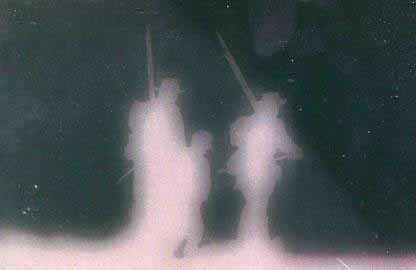
White Noise - Electronic Voice Phenomena
When there has been a disaster in an area, such as the events of 9/11 at Ground Zero in NYC, it leaves a spike or strong residue on the grid will always have ghostly manifestation, souls trapped or just moving from grid to grid as projections.
Places Where Ghosts Hang Out
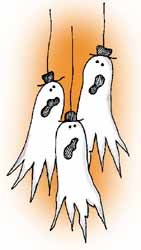
Many private residences, and not just old ones, have a tainted past that might include murder, suicide or some other tragic event. Many times, these events cause a place to become haunted. The location can become haunted because of a spirit being drawn there by these events or because one has stayed behind because of them. These spirits can be positive or negative and haunted houses boast all kinds of different phenomena. Private homes are also much harder for a ghost hunter to gain access to that public buildings but can be very rewarding if you can get an invitation.
Cemeteries

Cemeteries seem to offer the ghost hunter an excellent chance for
strange phenomena and spirit photos, perhaps because of the theory
involving "spirit portals" and "doorways" in many burial grounds.
Cemeteries with unmarked graves, where desecration has taken place or
where tragic events have occurred often become haunted. A search through
historical records can often point a researcher to a haunted graveyard.
Theaters
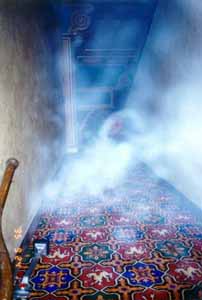
Churches
A church also contains a lot of spent human emotion and can attract ghosts. It is also possible that some churches could have been built on the site of a place that many considered evil. This would drive away the so-called evil spirits - although it is possible that the place was simply a haunted one. While churches seem like they would be a great place to conduct investigations, the same type of narrow thinking that labels ghosts as demons usually keeps the ghost hunter out of these locations.
Schools and Colleges
Many schools have had tragic events that attract ghosts, either from former students or staff members or from all of the energy given off by having so many young people all clustered together. The best way to pursue ghosts at a college is to pass the word to a student or two that you are interested in hearing their stories (they almost always have them) or by talking to someone on the security or maintenance staff. Talk to a teacher or a custodian at the local high school or elementary school. l do not recommend hanging around the playground and asking the students.
Hotels
Thousands of people pass through your local hotels and motels each year, so it is not a far reach to think there might be a ghost or two around. You can do a little investigating into the history of older hotels and even find that a suicide or murder could have taken there. Asking at the front desk about ghosts wouldn't do any good but the maintenance staff or the housekeeping workers might have a good story to tell. Be prepared to spend some money though. You cannot investigate a haunted hotel without spending the night there.
Battlefields and Crime Scenes
These two types of locations are linked because of the tragedy that has taken place at both of them. These locations deal with a sudden loss of life and this can sometimes cause a spirit to linger behind in confusion. The tragedy and the trauma involved can also lead towards a residual haunting as the terrible events replay themselves over and over again.
Cruise Ships like Queen Mary 1
Hospitals and Nursing Homes
These are places often overlooked by ghost hunters as it is not easy to get permission to hunt for ghosts as you will scare the residents. Bear in mind that many of those people are partially out of the grid meaning much of the consciousness is in a higher reality, so they already connect with spirits or ghosts.
Other Places
There are also many out there which do not fit into a specific category - bodies of water, caves, roadways, forests, mines, etc. Everything and anything is haunted at some time or another.
October 28, 2002
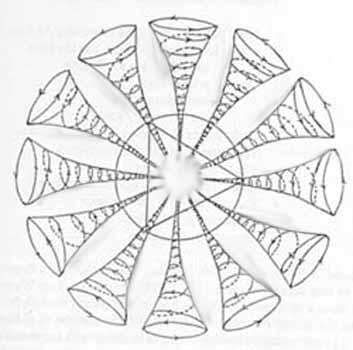
Day 8 - Magic Circle - The Power Of The Circle
The circle symbolize completion of a cycle, or anything else for that matter. It is 360º or 36 around 1 or 12 Around 1 X 3 (physical reality) = 36 - the Wheel of Time and Alchemy.
The circle represents the completion of a cycle of existence, coming full circle, completions, perpetual motion, progression through time, clockwork and formal structure.
The circle links with Zero Point and the number Zero linked to consciousness, the Golden Ratio and Fibonacci Numbers.
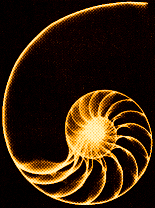
Circles have used in rituals and ceremonies, since the beginning of time.
You are the nucleus of the circle of which life is created.
the egg, from which all is created.
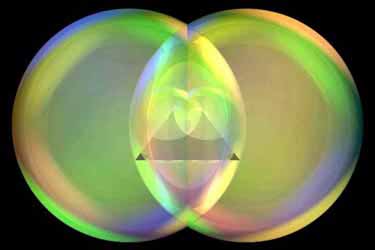
Vesica Pisces - Sacred Geometry
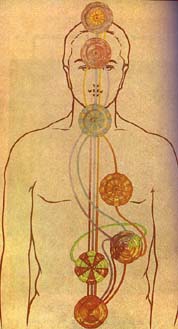
Chakras

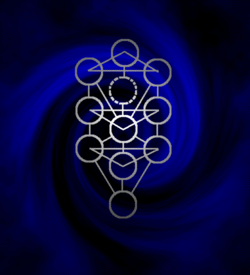
Spheres, Harmonics, Qabbalah
Other Circles
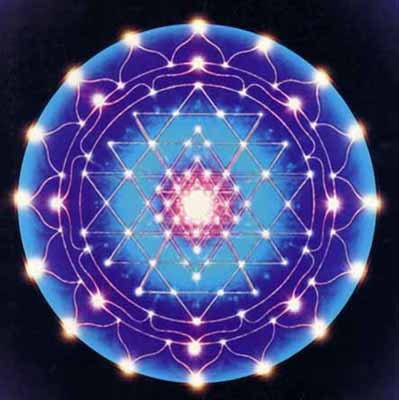
The Mandala
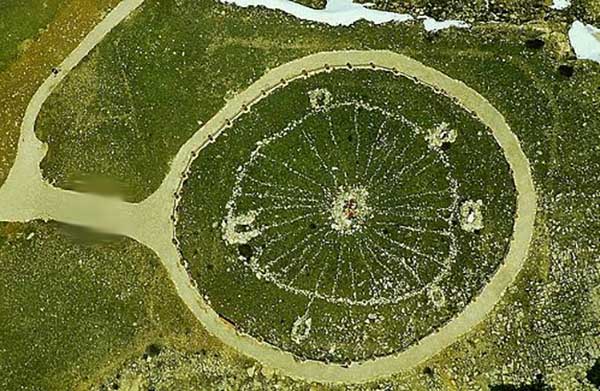
Medicine Wheel

Concentric Circles
They are found in nature, sacred architecture, art and mathematics.

Crop Circles
True crop circles are the simple circles
that depicted a central core which spirals outward
the rotation of consciousness in and out of realities.
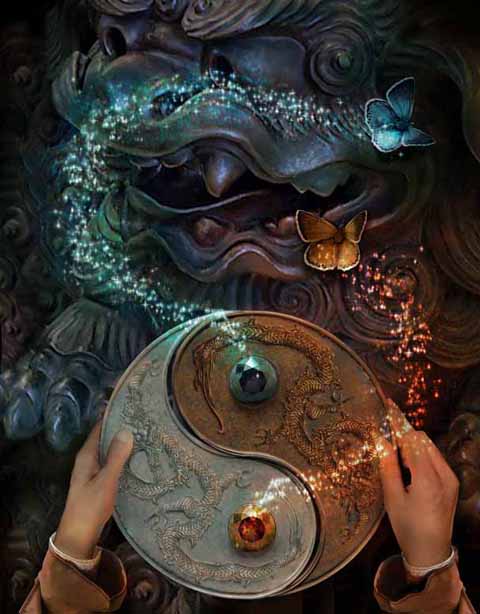
Yin Yang
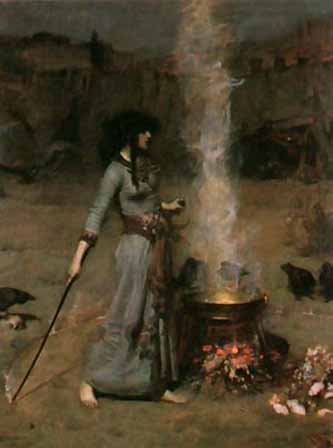
The Magic Circle can be defined as one of the most basic of devices in Magical Art. It can be created physically or psychically.
Symbolically the circle can be said to represent the macrocosm and the microcosm. It also represents eternity, for a circle has no visible beginning nor an end. The moment one stands in the center of the circle one symbolizes the divine in the universe.
The circle upon the ground separates the material from the spiritual realms, that is beneath the circle is the underworld and above it the heavens - as is above so is below.
The Magic Circle in theory serves as a container for magical energies as well as helping to switch from the mundane consciousness of everyday life to that of a more magically minded one. In certain types of magical rituals, those described as black magic conjurations by the ignorant, the circle is used to keep out hostile forces and entities.
Agrippa in Three Books of Occult Philosophy
- A circle doth answer to unity, and the number ten; for unity is
the center, and circumference of all things; and the number ten being
heaped together returns into a unity from whence it had its beginning,
being the end, and complement of all numbers. A circle is called an
infinite line in which there is no terminus a quo nor terminus ad quem,
whose beginning and end is in every point, whence also a circular motion
is called infinite, not according to time but according to place; hence
a circular being the largest and perfectest of all is judged to be most
fit for bindings and conjurations; whence they who adjure evil spirits
are wont to environ themselves about with a circle.
- He affirms his identity with the infinite. He affirms the equal
balance of his working; since all points on the circumference are
equi-distant from the center. He affirms the limitation implied by his
devotion to the Great Work. He no longer wanders about aimlessly in the
world. Crowley also offers the practical advice that: His circle
should not be too small and cramp his movements; it should not be so
large that he has long distances to traverse.
-
A Magical Circle of about 9 feet in diameter is usually suitable for the
solo practitioner, use your own judgement when determining the size for
group rituals or rituals that require movement such as dance.
The Magic of the Fire Circle
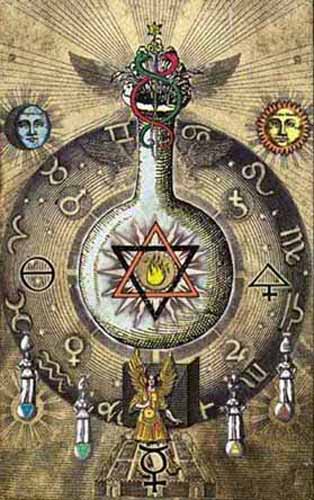
Since the dawn of time, human beings have gathered around the fire to make music, to dance, and to weave magic in the fire light. In the past fifteen years, there has been a resurgence in our Western culture for this type of ritual, a reawakening of the shamanic spirit. What is happening during the course of an all-night fire? After observing the ritual process for a number of years, and comparing stories and experiences with others, we have found that the alchemical model is a useful tool for understanding the all-night sacred fire circle ritual.
While fire circles and drum circles range from very informal social gatherings to all-night intentional magical workings, here we will focus on the style of intentionally created magical drum and dance fire circles that have been evolving for the past fifteen years on the East Coast, which have now found their way across the country to Fire Dance. One of the main differences in our rituals is the "container" which we create. In the alchemical tradition a container or vessel is often hermetically sealed to outside influences. At our fire circles the participants enter the vessel with the intention of doing their magical work.
Every fire circle ritual is different, but there are some elements common to all. In alchemy, the Magnum Opus, or "great work," is the creation of the philosopher's stone, which has many magical qualities. This philosopher's stone has the amazing power to turn all that it touches into gold, or to spiritualize matter. Basically, as we see it, we're using a pattern that we know works to change and grow more fully into our souls. We are turning lead into gold, on many different levels.
We see the primary goal of staying up all night, drumming, dancing and singing at a fire circle as an alchemical process. Each one of us is involved, on some level, in the great work. We accelerate the processes of personal growth by accelerating the fire of Nature, which transforms the lead of our lives into the gold of Spirit. One of the basic ideas behind many alchemical traditions is that of transmuting or purifying one thing from a "lower" form into a "higher" form. When we consider the history of Alchemy, we find many different traditions.
- Jeff Magnus McBride and Abigail Spinner McBride
The Magickal Circle
Thirteen Ways of Looking at a Circle
2. The Temple: The circle acts as a temple or church wherein the Witch stands in the immediate presence of his/her Lord and Lady. It is a sanctified place fit for their holy presence.
3. Sacred Spaces: Similar to the Temple aspect, the circle serves as a sanctified fortress, useful for consecrating items or people, or simply as a refuge from mundanity.
4. Protection: The circle is a shield or barrier against all external forces that would cause harm to the Witch. This is especially important since entry into circle necessitates a dropping of everyday personal shields, leaving us otherwise psychically unprotected.
5. Magical Filter: The circle filters the forces around the Witch, allowing in only those forces that are most auspicious for the working and keeping out detrimental forces. This can apply to such things as elemental, astrological, solar or lunar forces, or Tattvic tides.
6. Power Concentrator: The circle keeps in energy generated by a Witch, helping to shape the energy into a concentrated and focused Cone of Power, until such time as the Witch releases the Cone.
7. Redefining Reality: Casting a circle is a redefinition of reality. In essence, we create an island that we designate as the only true reality, then assign directions to this island : north, south, east, west, up, down, in, out.
8. Space Between The Worlds: The circle is neither entirely in the world of form, nor in the world of spirit. Instead, it is intermediate between the two, acting as a bridge connecting the planes of being. It acts as common ground where those of form may meet with those of spirit directly.
9. Omnipresent Now: Because the circle acts as a bridge between the worlds, it allows us to take advantage of the omnipresent now, or principle of nonlinear time, while allowing us to remain in the linear time to which we are accustomed. This allows us an advantage in scrying and divination, as we are more in contact with this principle of timelessness.
10. Yggdrasil - Akashic Egg: The circle represents the womb of the Goddess and the eternal cyclic nature of the universe with neither a beginning nor an end. The ever-becoming, all potential of the Creative Force given form is represented in the circle.
11. Extension of the Personal Shield or Aura: The circle can be regarded as the projection or externalization of the personal aura as a ring around the individual in solitary workings, or as a combination of the auras of all participants in group workings. For this reason, it is important that all participants assist the HP/HPS when casting the circle.
12. Crucible of Chance: By its very nature, the circle changes all those who enter into it on a regular basis as well as the environment surrounding the individual. This occurs even in the absence of the formal casting of change spells and is directly related to the nature of the circle itself.
13. Alchemical Catalyst For Redefining the Self: The circle forces us to reexamine our selves as well as our true Selves we come to the realization of our abilities and limitations, and through that realization can attempt to expand and overcome them. We progress in what Aleister Crowley termed the Great Work, the alchemical transformation of the self into the image of the Self in essence changing lead into gold.
Circle Work
Tribal rituals, dances, are performed in sacred circles, the ceremonial hoop. Some dances involve holding hands while other are singular. Often joining hands in a circle with others seems to be a healing process and the beginning of a journey of self-discovery.
Today, thousands of groups all around the country are choosing to meet in circles. This is new. Just a few decades ago, you would have found the same groups sitting in a classroom format. Intuitively, people sense that the circle has something to offer them. People often comment that the circle helps them feel a sense of community, and that it reminds them of the value of equality-in the circle, nobody occupies a "special" position.
However, most groups that gather in a circle are not practicing Circle work. While Circle work may include a wide range of elements such as emotional healing work, discussion, physical exercise, and so on, it is first and foremost a spiritual practice that begins and ends with awareness of the center. This awareness of, and reverence for, the center as a place of sacred power is what distinguishes Circle work from other types of circle gatherings.
Circle work begins and ends with the intention of listening to the voice of the center, the voice of spirit-or, if you prefer, to the voice of our own deepest wisdom, of which the center is the universal symbol. Circle work deepens our receptivity and strengthens our connection to spirit. Like a giant ear, or like a satellite dish, the circle helps us tune in to vast resources of healing, wisdom and guidance. Many people have found Circle work to be a powerful agent of individual healing, transformation, and growth.
My own background is in dance, psychotherapy, Hindu mythology and Buddhist meditation. Therefore, movement and dance are important elements of my circles, as are meditation, chanting, ritual, storytelling, and emotional healing. I personally feel primarily called to lead women's circles, and to train women in circle leadership. However, Circle work can take myriad forms. Today, circles are forming in schools and hospitals, in businesses and in the corporate world. Young and old, men and women are beginning to reclaim the circle as a tool for healing themselves, their families and communities.
Circle work, as we practice it today, is both ancient and brand new. It's ancient in that humans have always gathered in circles to pray, celebrate, and seek spiritual communion. Throughout the ages, around the planet, the center of a circle has been revered as symbol of the universal source. At the same time, Circle work is new, because we know, in a way our ancestors did not, that we live on a small planet where all beings are interconnected. We know that we cannot survive unless we evolve into planetary citizens and agents of world peace. In addition, the increasing complexity of the human psyche demands that we apply all the insights and skills of modern psychology to the art of Circle work. In Circle work, we develop psychological and spiritual maturity simultaneously.
In the twentieth century, C.G. Jung was the first to acknowledge the power of the circle as an archetype of wholeness and integration. As he pointed out, the center of a circle is an ancient and universally understood symbol of God, Spirit, the Source, the One. He described the circle archetype as a much-needed medicine for the modern illness of psychological and social disintegration. Jung himself painted circular images called mandalas, and used mandala art in his work with patients. Circle work builds on Jung's insights, but takes them one step further by reclaiming the circle as a vessel for groups to experience healing and wholeness, not just individuals.
Each human being is both a unique, separate individual and a social creature. Therefore, we need both solitary and communal forms of spiritual practice. Because our society has for the last few centuries worshipped at the altar of individualism, we have gathered a great wealth of spiritual practices that can be done without a community. Meditation, prayer, visualization, and yoga are just a few examples.
However, we're impoverished in the arena of communal practice. Most communal forms of spiritual practice reflect specific religious doctrines. Thus, Catholics participate in the Mass, and Moslems in communal prayer. While these are rich, beautiful practices, they don't support spiritual communion between people of diverse religious faiths. Moreover, growing numbers of people no longer feel aligned with institutional religion. More and more people feel spiritually alone and disconnected. They yearn for spiritual community, but all too often don't know where to find it, or how to create it.
Circle work is a spiritual rather than a religious practice, and is not based on any particular creed. Therefore, it has the power to unite people who hold widely divergent religious and spiritual beliefs, or who have no particular beliefs at all. The only prerequisite for Circle work-the foundation that all members of a circle must share-is respect for life in all its forms, and a commitment to individual, social, and planetary wholeness.
Circle work represents a powerful tool for planetary as well as personal healing. As a form of relationship practice, it teaches us the ways of peaceful co-existence, skillful communication, and compassionate love of self and others. At the same time, Circle work hones our receptivity to spirit-something we urgently need to cultivate at this time in history. Our brains, miraculous though they are, are incapable of meeting the challenges we now face. If we continue to rely on them alone for guidance, we will no doubt go the way of the dinosaurs, taking thousands of other species with us. Circle work offers a non-religious way for people to gather in sacred space, and to access vast resources of creativity and compassion-resources that can help accomplish what none of our politicians have been able to do, namely to secure a livable planet for our children and our children's children.
The Cauldron: Ancient Archetype - Modern Metaphor
These ancient mysteries express the primacy of the cauldron as the archetype for spiritual renewal and healing. In my own life, the potency of the cauldron image came to me spontaneously, through my own experiences with healing, shamanic journeying and ecstatic trance without much exposure to cauldron lore from the ancient ways. In fact, I did not even know the legend of Ceridwen when I first took on the name.
When I participated in ceremonies I could enter a deep trance state only when I felt as if the circle was accepting, strong and secure like a large vessel, able to hold all the painful and chaotic energies inside of me. This enabled me to let go in a way that allowed Spirit to enter in a profound experience of ecstatic union. In ecstatic trance I felt a direct experience of Spiritual Reality physically, mentally, emotionally and spiritually. I would shake and cry and dance, the energy moving me and taking me beyond my 'self' into another reality filled with great power and great joy.
In my own journeying I found myself whisked away by my animal allies to a clearing in the woods with a fire and a large cauldron. I was grabbed and thrown into the cauldron. I was both terrified and exhilarated as I spun around the inside of the cauldron, caught in a great energy vortex. There could be no resistance, only surrender and then came release and bliss.
As I became more aware of how cauldron imagery played a role in my most powerful experiences of healing and transformation, I began to seek a clearer understanding of the process so that I could repeat it for myself and for others. The cauldron was always in the back of my mind as I began teaching the Elements of Magical Community class. I knew that I wanted to bring together many elements to create a powerful ecstatic ceremony: voice, movement, and percussion with hands-on healing, prayer and shamanic journeying; but initially, I didn't know how all the pieces would go together.
After months of experimentation, the Healing Cauldron ceremony came into form: a consistently powerful, smoothly integrated process for directly experiencing Spiritual Reality through ecstatic trance. I would like to offer some of what I've learned about creating ecstatic ceremony through the model of the cauldron.
The components of ecstatic ceremony can be understood in terms of the elemental powers of Earth, Air, Fire, Water and Spirit in relationship to the cauldron. The cauldron is held over fire by a tripod resting solidly on the Earth. The three posts refer to our orientation to Person, Place and Time as we gather for ceremony. A well-grounded ceremony occurs in a known context which speaks to who we are, where we are and when we are. Who are we as a people who gather for this ceremony? Where is it that we stand on the land of the Earth Mother? What lies to the North, South, East and West? What is our relation to Earth and Sky? What is the history of this place and our relationship to that history? When are we in the cycles of time, the turning of Sun and Moon?
The posts of the tripod come together at a point above the fire from which hangs the cauldron. That point in the Air corresponds to the expressed purpose of the ceremony and the united intentions of the participants. The language and the metaphor for the ceremony must be simple and clear so that everyone is united in their purpose and can focus their energies together.
Below the cauldron we build a Fire. The fuel for the fire is the dead wood of our own personal barriers, identity structures and limiting beliefs which must be offered up as a sacrifice in order for the ceremony to have power. If everyone holds onto old familiar notions, staying 'safe' within old control patterns and ego structures, then there can be no fire and no transformation. The drumming, dancing and singing that we do serve as ignition to light the fire to start the burning and keep it going. As we are able to move and make sound spontaneously, focusing authentically on core energies inside us; we let go of the critical mind and the limiting structures that go with it and enter into a state of trance. Then the unwanted debris can catch fire and begin to burn.
In our ecstatic dance, as we release old structures, we can begin to feel the movement of emotions which may take the form of shaking and crying. We can make an offering of the liquid substance of our emotions, the Water element, as a gift to Spirit and to the cauldron. Within the cauldron of our acceptance, allowing our emotions to flow, the emotional energy can be transformed by the actions of Spirit. In the Great Mystery, the emotional energy released by any of the participants becomes nourishment for the whole circle and we find ourselves inside the cauldron in a field of energy glowing and vibrating all around and through us. And so we may partake of Universal Life Force as we dance our ecstatic dance, healing ourselves and each other, and offering up prayers for loved ones and the planet.
Prior to beginning the Healing Cauldron ceremony in the Magical Community class, we work in small groups to connect with our own bodies, centering and letting go of distracting thoughts. We open ourselves to the flow of Earth and Sky energy running through our bodies, through our hearts and out our hands to each other. After casting the circle and invoking Spirit, the ceremony proceeds spontaneously, beginning with the voice, adding drumming and movement, then healing, and then prayer. We offer each other healing touch, holding to the notion that in ceremony there is no giver and no receiver. We are both as we participate in the Grace that flows through us and around us. Our prayers come spontaneously out of our experience of abundance and gratitude. We end with a shamanic journey to integrate the energies and connect with our Spirit Allies, lying quietly on the floor listening to a steady drum beat. After sharing verbally with everyone in the circle, we move into pairs or small groups to share gentle touch for grounding and smoothing the energy field around each of us.
I think that it is important that leaders seeking to facilitate ecstatic ceremony, work to develop in themselves a high level of comfort and familiarity with the energies that get released and the action of Spirit in transforming those energies. We have all participated in ceremonies where the leader mistrusts the participants or the process. The circle feels constrained and stiff with control and the energy never gets cooking. On the other hand, participants can feel anxious and inhibited unless the energies are held. What's needed is a solid yet open kind of holding, a great Cauldron of awareness, invitation, understanding and acceptance. Spirit is called and welcomed deep inside us.
When we manifest a Healing Cauldron, we experience something quite wonderful and even miraculous in our ecstatic union and harmony with the Great Mystery. I believe this experience is something we all yearn for deep in our souls, and we suffer terribly it's absence from our contemporary society. We so often accept shallow substitutes which leave us feeling even more empty and separate than before. I hope that through my writing and teaching I can assist others in creating powerful ceremonies for healing and renewing us all in the Cauldron of the Great Goddess.
Creating a Magic Circle
Your circle can be made of stones, crystals, metal, anything that resonates as a power generator.
You can add things that you think might enhance your experience, such as incense.
You can create your circle outdoors in the energies of nature, or indoors.
The circle can be small, just around you or extend outward at a great distance.
You can do this alone or with a group of people standing or sitting in a circle in which you are the center.
Now sit or stand in the center of your circle. You may sit on a blanket or cloth. Sitting in the lotus position is usually best. If you are not comfortable in this position, use a chair.
Face in the direction that feels most comfortable. Most people face magnetic north. Your soul will guide this.
Once you have centered your energy, you will intuitively know you are in the right position.
Sit there for a few minutes, with your eyes either opened or closed, and experience the energies as they move around you. Sense the direction of the flow, the electromagnetic energy currents.
A spiraling energy, clockwise or counter clockwise, shows a movement of consciousness.
It may take a few minutes to create an energy field. Be patient.
Now use your energies in any way that you feel guided.
Working in a Magic Circle
For example one may choose to begin in the east as it symbolizes light, for it is from this quarter that day break begins. For what ever quarter one begins it, it must be for a clear and logical reason.
Choose a location for drawing your Magical Circle. The location whether indoors or outdoors should provide a sense of privacy. Take an object like a chair or lantern to serve as a fixed point so you may draw a circle using a suitable length of string, or alternatively have someone hold it down upon the ground. You should have a piece of chalk or other instrument at the other end with which to draw the circle with.
Go to the quarter you have decided to start at and perform any invocations/affirms or exercises you feel necessary. For matters of a constructive nature travel with the sun (In the Southern Hemisphere this is counter clockwise, in the Northern Hemisphere this is clockwise.) around the circle with what ever magical instrument you have chosen. This is usually the knife or the wand, the instrument used all depends upon the your choice of symbolism. If you do not yet have the necessary instrument decide on a hand gesture that to you symbolizes force.
As you travel around the circle, visualize energy blasting from the instrument (or your fingers) down towards the circle like a flame. This flame continues to flicker on the out line of the circle like fire as you continue around with the circle.
The whole operation must be done with total concentration, otherwise success is doubtful.
When you have reached the point from which to started, visualize the circle in its completeness and mentally or verbally affirm its existence. It is important to stay on the inside of the circle at all times until finished with it, physically cutting across may render it useless.
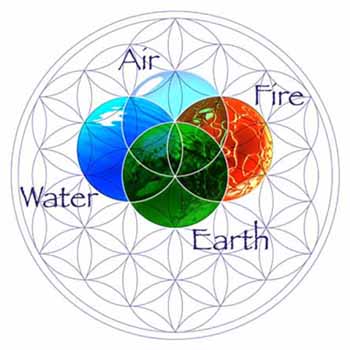
Next it is usual to invoke the four elements from the four quarters. The following suggestions are for the Southern Hemisphere, for those in the Northern Hemisphere reverse the directions for fire and water.
Beginning in the East, invoke the element of Air. Traveling with the sun move around the inside of the circle to the South, invoke the element of Water, traveling with the sun move around the inside of the circle to the North, invoke the element of Fire.
Traveling with the sun more around the inside of the circle to the West, invoke the element of Earth.
Traveling with the sun more around the inside of the circle to the East, invoke the element of Spirit.
When invoking the elements, one can either use long and wordy conjurations similar to those used in medieval grimoires, short affirmations or somewhere in between the two.
It is important that however it is done that it be meaningful and rich in symbolism appropriate to the invoked element. Also visualize the element with as much imagination as possible, hear the hissing of the flames of fire, feel the coolness of water etc.
The elements may be personified as Archangels or Gods, or they may be viewed as impersonal forces. Whatever case, the important part is to make the visualization as deep and meaningful as possible.
Now the circle is complete. Do whatever it is you set out to do.
Once finished with the circle it is important to dismiss the elements. If you have personified the elements be sure to thank them for their service and farewell them.
On the other hand if they are impersonal then visualize them withdrawing and affirm that they have gone back to whence they came.
Next visualize the energy of the circle itself dispersing. Those that wish to do a banishing rituals should do another one after this.
Finally record your experiment in a journal. It should go without saying that all the details of the rituals should be well thought out before even attempting to draw the circle. Invocations and dismissals along with the details of the whole affair should written down and committed to memory before doing anything.
Barbara G. Walker - The Woman's Encyclopedia of Myths and Secrets
October 29, 2002
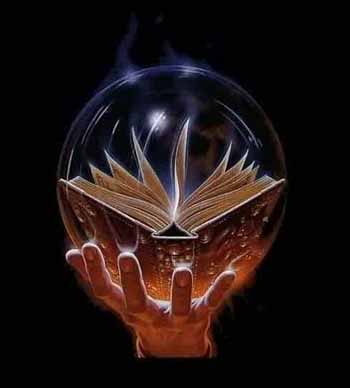
Day 9 - Witchcraft
Reality is about consciousness and shifting grids to manifest as if by magic or synchronicity. The magic is in your soul, if you can find it. There are many roads to that end, some of which are linked to supernatural powers, what some call 'witchcraft'.
Human consciousness is evolving and with that souls seek personal empowerment, paranormal powers, self-actualization, balance, and reunion of self - body, mind and soul. Anything that aids that process, without interfering with the patterns of others, works. You have the power. Your powers should be used to help yourself and others. All abuses of power lead to destruction, especially in the twenty-first century.
When you are emotionally balanced, you manifest easily, no external powers, rituals or ceremonies needed. When you are lost and confused, you seek external methods to empower yourself.
To practice witchcraft, one must study spells and all things related.
Witchcraft
Practices and beliefs that have been termed "witchcraft" do not constitute a single identifiable religion, since they are found in a wide variety of cultures, both present and historical; however these beliefs do generally involve religious elements dealing with spirits or deities, the afterlife, magic and ritual. Witchcraft is generally characterised by its use of magic.
Sometimes witchcraft is used to refer, broadly, to the practice of indigenous magic, and has a connotation similar to shamanism. Depending on the values of the community, witchcraft in this sense may be regarded with varying degrees of respect or suspicion, or with ambivalence, being neither intrinsically good nor evil. Members of some religions have applied the term witchcraft in a pejorative sense to refer to all magical or ritual practices other than those sanctioned by their own doctrines - although this has become less common, at least in the Western world. According to some religious doctrines, all forms of magic are labelled witchcraft, and are either proscribed or treated as superstitious. Such religions consider their own ritual practices to be not at all magical, but rather simply variations of prayer.
"Witchcraft" is also used to refer, narrowly, to the practice of magic in an exclusively inimical sense. If the community accepts magical practice in general, then there is typically a clear separation between witches (in this sense) and the terms used to describe legitimate practitioners. This use of the term is most often found in accusations against individuals who are suspected of causing harm in the community by way of supernatural means. Belief in witches of this sort has been common among most of the indigenous populations of the world, including Europe, Africa, Asia and the Americas. On occasion such accusations have led to witch hunts.
Under the monotheistic religions of the Levant (primarily Christianity, and Islam), witchcraft came to be associated with heresy, rising to a fever pitch among the Catholics, Protestants, and secular leadership of the European Late Medieval/Early Modern period and sometimes leading to witch hunts. Throughout this time, the concept of witchcraft came increasingly to be interpreted as a form of Devil worship. Accusations of witchcraft were frequently combined with other charges of heresy against such groups as the Cathars and Waldensians.
The Malleus Maleficarum, a witch-hunting manual used by both Roman Catholics and Protestants, outlines how to identify a witch, what makes a woman more likely to be a witch, how to put a witch to trial and how to punish a witch. The book defines a witch as evil and typically female.
In the modern Western world, witchcraft accusations have often accompanied the Satanic Ritual Abuse hysteria. Such accusations are a counterpart to blood libel of various kinds, which may be found throughout history across the globe.
Practices to which the witchcraft label have historically been applied are those which influence another person's mind, body or property against his or her will, or which are believed, by the person doing the labelling, to undermine the social or religious order.
Some modern commentators consider the malefic nature of witchcraft to be a Christian projection. The concept of a magic-worker influencing another person's body or property against his or her will was clearly present in many cultures, as there are traditions in both folk magic and religious magic that have the purpose of countering malicious magic or identifying malicious magic users.
Many examples can be found in ancient texts, such as those from Egypt and Babylonia. Where malicious magic is believed to have the power to influence the mind, body or possessions, malicious magic users can become a credible cause for disease, sickness in animals, bad luck, sudden death, impotence and other such misfortunes. Witchcraft of a more benign and socially acceptable sort may then be employed to turn the malevolence aside, or identify the supposed evil-doer so that punishment may be carried out. The folk magic used to identify or protect against malicious magic users is often indistinguishable from that used by the witches themselves.
There has also existed in popular belief the concept of white witches and white witchcraft, which is strictly benevolent. Many neopagan witches strongly identify with this concept, and profess ethical codes that prevent them from performing magic on a person without their request.
Where belief in malicious magic practices exists, such practitioners are typically forbidden by law as well as hated and feared by the general populace, while beneficial magic is tolerated or even accepted wholesale by the people - even if the orthodox establishment objects to it.
Spellcasting - Magic
Probably the most obvious characteristic of a witch was the ability to cast a spell, a "spell" being the word used to signify the means employed to accomplish a magical action. A spell could consist of a set of words, a formula or verse, or a ritual action, or any combination of these. Spells traditionally were cast by many methods, such as by the inscription of runes or sigils on an object to give it magical powers, by the immolation or binding of a wax or clay image (poppet) of a person to affect him or her magically, by the recitation of incantations, by the performance of physical rituals, by the employment of magical herbs as amulets or potions, by gazing at mirrors, swords or other specula (scrying) for purposes of divination, and by many others means.
Conjuring the dead Strictly speaking, "necromancy" is the practice of conjuring the spirits of the dead for divination or prophecy - although the term has also been applied to raising the dead for other purposes. The Biblical 'Witch' of Endor is supposed to have performed it (1 Sam. 28), and it is among the witchcraft practices condemned by Elfric of Eynsham: "Yet fares witches to where roads meet, and to heathen burials with their phantom craft and call to them the devil, and he comes to them in the dead man's likeness, as if he from death arises, but she cannot cause that to happen, the dead to arise through her wizardry."
Locations
Europe
Early converts to Christianity looked to Christian clergy to work magic more effectively than the old methods under Roman paganism, and Christianity provided a methodology involving saints and relics, similar to the gods and amulets of the Pagan world. As Christianity became the dominant religion in Europe its concern with magic lessened.
The Protestant Christian explanation for witchcraft, such as those typified in the confessions of the Pendle Witches, commonly involve a diabolical pact or at least an appeal to the intervention of the spirits of evil. The witches or wizards addicted to such practices were alleged to reject Jesus and the sacraments, observe "the witches' sabbath" (performing infernal rites which often parodied the Mass or other sacraments of the Church), pay Divine honour to the Prince of Darkness, and, in return, receive from him preternatural powers. Witches were most often characterized as women. Witches disrupted the societal institutions, and more specifically, marriage. It was believed that a witch often joined a pact with the devil to gain powers to deal with infertility, immense fear for her children's well-being, or revenge against a lover.
The Church and European society was not always obsessed with hunting witches and blaming them for bad occurrences. Saint Boniface declared in the 8th century that belief in the existence of witches was un-Christian. The emperor Charlemagne decreed that the burning of supposed witches was a pagan custom that would be punished by the death penalty. In 820 the Bishop of Lyon and others repudiated the belief that witches could make bad weather, fly in the night, and change their shape. This denial was accepted into Canon law until it was reversed in later centuries as the witch-hunt gained force. Other rulers such as King Coloman of Hungary declared that witch-hunts should cease because witches do not exist.
The Church did not invent the idea of witchcraft as a potentially harmful force whose practitioners should be put to death. This idea is commonplace in pre-Christian religions and is a logical consequence of belief in magic. According to the scholar Max Dashu, the concept of medieval witchcraft contained many of its elements even before the emergence of Christianity. These can be found in Bacchanalias, especially in the time when they were led by priestess Paculla Annia (188-186).
However, even at a later date, not all witches were assumed to be harmful practicers of the craft. In England, the provision of this curative magic was the job of a witch doctor, also known as a cunning man, white witch, or wiseman. The term "witch doctor" was in use in England before it came to be associated with Africa. Toad doctors were also credited with the ability to undo evil witchcraft. (Other folk magicians had their own purviews. Girdle-measurers specialised in diagnosing ailments caused by fairies, while magical cures for more mundane ailments, such as burns or toothache, could be had from charmers.)
Such "cunning-folk" did not refer to themselves as witches and objected to the accusation that they were such. Records from the Middle Ages, however, make it appear that it was, quite often, not entirely clear to the populace whether a given practitioner of magic was a witch or one of the cunning-folk. In addition, it appears that much of the populace was willing to approach either of these groups for healing magic and divination. When a person was known to be a witch, the populace would still seek to employ their healing skills; however, as was not the case with cunning-folk, members of the general population would also hire witches to curse their enemies. The important distinction is that there are records of the populace reporting alleged witches to the authorities as such, whereas cunning-folk were not so incriminated; they were more commonly prosecuted for accusing the innocent or defrauding people of money.
The long-term result of this amalgamation of distinct types of magic-worker into one is the considerable present-day confusion as to what witches actually did, whether they harmed or healed, what role (if any) they had in the community, whether they can be identified with the "witches" of other cultures and even whether they existed as anything other than a projection. Present-day beliefs about the witches of history attribute to them elements of the folklore witch, the charmer, the cunning man or wise woman, the diviner and the astrologer.
Powers typically attributed to European witches include turning food poisonous or inedible, flying on broomsticks or pitchforks, casting spells, cursing people, making livestock ill and crops fail, and creating fear and local chaos.
In the Scandinavian novel Gutviga, the witches enter Scandinavia and burning down Cathedrals in Trondheim. In the end of the novel, they are all deported out of Europe, and into some unknown places. Gutviga was a girl that they has kidnapped and raised as a witch. She gets hanged in the end of the novel.
-
If a man has put a spell upon another man and it is not justified, he
upon whom the spell is laid shall go to the holy river; into the holy
river shall he plunge. If the holy river overcome him and he is drowned,
the man who put the spell upon him shall take possession of his house.
If the holy river declares him innocent and he remains unharmed the man
who laid the spell shall be put to death. He that plunged into the river
shall take possession of the house of him who laid the spell upon him.
Verses such as Deuteronomy 18:11-12 and Exodus 22:18 "Thou shalt not suffer a witch to live" provided scriptural justification for Christian witch hunters in the early Modern Age (see Christian views on witchcraft). The word "witch" is a translation of the Hebrew kashaph, "sorceress". The Bible provides some evidence that these commandments were enforced under the Hebrew kings:
-
"And Saul disguised himself, and put on other raiment, and he went, and
two men with him, and they came to the woman by night: and he said, I
pray thee, divine unto me by the familiar spirit, and bring me him up,
whom I shall name unto thee. And the woman said unto him, Behold, thou
knowest what Saul hath done, how he hath cut off those that have
familiar spirits, and the wizards, out of the land: wherefore then
layest thou a snare for my life, to cause me to die?" (The Hebrew verb
"Hichrit" translated in the King James as "cut off", can also be
translated as "kill wholesale" or "exterminate")
The New Testament condemns the practice as an abomination, just as the Old Testament had (Galatians 5:20, compared with Revelation 21:8; 22:15; and Acts 8:9; 13:6). The word in most New Testament translations is "sorcerer"/"sorcery" rather than "witch"/"witchcraft".
However, some of the Rabbis practiced "magic" themselves. For instance, Rabbah created a person and sent him to Rabbi Zera, and Rabbi Hanina and Rabbi Oshaia studied every Sabbath evening together and created a small calf to eat (Sanhedrin 65b). In these cases, the "magic" was seen more as divine miracles (i.e., coming from God rather than pagan gods) than as witchcraft. Judaism also makes clear that witchcraft while always forbidden to Jews, may be performed by Gentiles outside the holy land (i.e. Israel).
Many Muslims believe that the devils taught sorcery to mankind.
However, whereas performing miracles in Islamic thought and belief is reserved for only Messengers and Prophets; supernatural acts are also believed to be performed by Awliyaa - the spiritually accomplished. Disbelief in the miracles of the Prophets is considered an act of disbelief; belief in the miracles of any given pious individual is not. Neither are regarded as magic, but as signs of Allah at the hands of those close to Him that occur by His will and His alone.
Muslim practitioners commonly seek the help of the Jinn (singular--jinni) in magic. It is a common belief that jinn can possess a human, thus requiring Exorcism. (The belief in jinn is part of the Muslim faith. Imam Muslim narrated the Prophet said: "Allah created the angels from light, created the jinn from the pure flame of fire, and Adam from that which was described to you (i.e., the clay.)") To cast off the jinn from the body of the possessed, the "ruqya," which is from the prophet'ssunnah is used. The ruqya contains verses of the Qur'an as well as prayers which are specifically targeted against demons. The knowledge of which verses of the Qur'an to use in what way is what is considered "magic knowledge".
Students of the history of religion have linked several magical practises in Islam with pre-islamic Turkish and East African customs. Most notable of these customs is the Zar Ceremony.
In Southern African traditions, there are three classifications of somebody who uses magic. The thakathi is usually improperly translated into English as "witch", and is a spiteful person who operates in secret to harm others. The sangoma is a diviner, somewhere on a par with a fortune teller, and is employed in detecting illness, predicting a person's future (or advising them on which path to take), or identifying the guilty party in a crime. She also practices some degree of medicine. The inyanga is often translated as "witch doctor" (though many Southern Africans resent this implication, as it perpetuates the mistaken belief that a "witch doctor" is in some sense a practitioner of malicious magic). The inyanga's job is to heal illness and injury and provide customers with magical items for everyday use. Of these three categories the thakatha is almost exclusively female, the sangoma is usually female, and the inyanga is almost exclusively male.
In some Central African areas, malicious magic users are believed by locals to be the source of terminal illness such as AIDS and cancer. In such cases, various methods are used to rid the person from the bewitching spirit, occasionally Physical abuse and Psychological abuse.
Children may be accused of being witches, for example a young niece may be blamed for the illness of a relative. Most of these cases of abuse go unreported since the members of the society that witness such abuse are too afraid of being accused of being accomplices. It is also believed that witchcraft can be transmitted to children by feeding. Parents discourage their children from interacting with people believed to be witches.
Casual encounters are ones of surprise and unexpectedness and puts the character at the mercy of the supernatural being. The ritual encounter however, is a more planned event, where the individual is the subject and he or she knows beforehand the kind of experience they will take part in. The Russian word for witch, shows exactly that (the literal translation means "The one who knows").
Russia, as well as many other cultures, produces tales with both encounters. These parts of folklore including omens, guardian spirits, and fate - all have little to do with the eastern orthodox religion yet seem to appear in much of the folklore of the 19th century. Visual omens, often in dreams, are well-known, including a gloved man indicating death, fish predicting marital luck, and children¹s games foretelling marital life, fertility and even wars. Passed down are tales of how other indicators, include the crying of a baby that is not within sight, the hammering of nails off in the distance, and also ringing of the ears, can foretell different things.
Notable Dates and Events in Witchcraft History
1484, Pope Innocent VIII issued a 'papal bull' that allowed Cramer & Springer, two members of the Inquisition, to publish (in 1486) the Malleus Maleficaru', a book that became known as 'the Witch hunter's bible'. In this book, they recorded what they believed to be the acts of Witches, describing Witchcraft as a major threat to the Christian religion and society as a whole. They also described Witches as being 'slaves of Satan'.
1542, in England first statute against Witchcraft issued by Henry VIII.
1563, second statute against Witchcraft issued by Elizabeth I.
1611, James I had the first English translation of the Christian Bible published, but believing Witches to be responsible for plotting to sink his ship and kill his family, he had the line 'Thou shall not suffer a poisoner to live' changed to, 'Thou shall not suffer a Witch to live' to reflect his disdain.
In 1645, Mathew Hopkins appointed himself as 'Witchfinder General' in East Anglia. Although thought that his persecution of Witches was enacted throughout the country, he actually only had sway in East Anglia.
1692, the Salem Witch trials took place in Salem Massachusetts.
1888, the Hermetic Order of the Golden Dawn was founded by W.R. Woodman.
1951, repeal of the 1736 Witchcraft act in England.
Altar
Four Quarter Candles in colors that are appropriate to the element and quarter they represent. Yellow or White= Air and East; Red or Burgundy= Fire and South; Blue=Water and West; Green or Brown= North and Earth. Quarter candles are not always on the altar. Many circles will put free standing pillars or stands to place these candles upon on the out side edge of the sacred circle for ritual. This is one of those areas where a ritual altar may differ from the home altar used daily. Illumination candles- are there to provide light. They vary in size, color, shape, and scent. The Goddess candle is a silver or white candle (provided that the East candle is yellow and not white) that represents the Goddess. Matches or lighter.
The Candle Snuffer is used to put out candles at the appropriate time. There are many viewpoints on weather of not this should be used in place of simply blowing them out or snuffing a candle with wet finger tips. If you have a candle that has been burning long enough for a lot of liquid wax to be present, blowing it out can also get hot wax in your eyes or on the other altar things near by. Snuffing candles with your fingers, even if they are wet can cause injury.
The Cauldron is a symbol of the Goddess and corresponds to the element of Water. It is used in ritual as a container in which Magickal transformations can occur and is often a focal point of a ritual. During spring rites, it can be filled with water and fresh flower petals and in winter, fires can be lighted within the cauldron to symbolize the rebirth of the Sun. It can also be filled with water and used for scrying. Cauldrons are often three-legged and made of iron.
The Chalice symbolizes the Goddess and fertility and is related to the element of Water. It can be used to hold water or ritual wine. The chalice can be made out of any substance, silver, brass, wood or soapstone.
The Wand is an instrument of invocation, and corresponds to the element of Air. It is sometimes used to direct energy, to scratch Magickal symbols in the ground, or to stir the contents of a cauldron. Woods such as willow, elder, oak, hazel and apple are traditionally used for the wand, but any fairly straight piece of wood can work. Many carve special symbols into the wood, or attach gems and stones to personalize the wand.
The Censer or incense burner, represents the element of Air. It can be a big, swinging metal contraption like those used in Catholic churches or a small wooden stick incense holder. A bowl filled with sand or salt can also be used. The sand or salt absorbs the heat from the charcoal, or incense sticks or cones can be pushed into it.
The Athame is the magical knife commonly linked with the element of Fire. It is never used for cutting purposes, or for any purposes outside the circle. The Athame is used in ritual to direct energy and is an instrument of power and manipulation. The blade is often dull and double-edged and the handle is usually black to absorb power.
The Pentacle represents the element Earth, and is often used as a symbol of protection - it can be hung over doors and windows or worn around the neck as a pendant. The five points on a pentacle represent each of the five elements: Earth, Air, Fire, Water and Spirit. In ritual, the pentacle is used to evoke spirits and to consecrate other ritual tools. It can be made brass, silver wood, clay, or any other material that can be engraved.
The Broomoften is used to purify space before a circle is cast. It is related to the element of Water and is used in many water spells that involve cleansing. It also historically has been used to protect the home by laying it across the door. To make a magick broom, it is suggested that you use an ash staff, birch twigs and a willow binding (ash is protective, birch cleansing, and willow is sacred to the Goddess.)
Consecrated Oil is on the altar for anointing and blessing of tools and circle members or the solitary practitioner.
Herbs used alone or in combinations with other herbs
Bell [Harmonics - Tones]
Book of Shadows is a collection of spells, rituals, invocations, dreams, ideas and thoughts, information and personal observations of a witch or group of witches. It is a personal document, written for, and by its readers. Sections may include:
- Blessing Guidelines to a Magickal Life
- The Charge of the Goddess
- Invocations
- Properties of Herbs
- Properties of Herbal Blends
- Properties of Gemstones
- Magick Recipes

1. Cast Your Circle -- "I cast this Circle and charge it to draw in only the most perfect, powerful, correct, and harmonious energies."
2. Invocation of the God and Goddess
3. State Your Purpose: "I am here to......"
4. Thank God and Goddess
5. Release the Circle
The different tools on the altar will then be used in accordance with your purpose. Ex: To get rid of something - you can write the information on a piece of paper then burn it in the cauldron.
The 'Book of Spells' you follow will guide what you do.
Begin by selecting something in your life that you want to change. Then find a previously written book of spells and review how that spell was done, before you actually go through with casting your spell.
Next, perform the spell or rite.
Later, when you develop your own spells, write them down in a your own Book of Shadows.
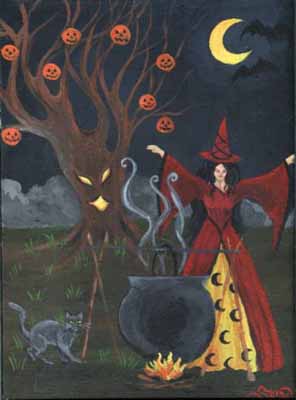
Breath deeply, ground and center.
Raise hands in Goddess position (spread in a V over your head
feet apart), then slowly lower them and cross them into the God
position (arms crossed over your chest, feet together)
feeling the power coursing down your arms throughout your body.
Light a candle that give lots of light
Light the incense at the East, clap hands over the flame to extinguish
"Creature of Air
I cleanse and consecrate thee
to remove all negativity in this world
So mote it be"
Pass your hand over the incense three times to banish all negativity,
imagine a sparkling light around the incense
Light the candle at the South
"O creature of Fire
I cleanse and consecrate thee
to remove all negativity in this world
So mote it be"
Pass your hand over the flame three times, as above
Do the same for West and North, with water and a bowl of salt, respectively
Beginning North, move your hands over the altar five times, mixing
the powers of the elementals. Tap the hilt of the knife on the altar
at your right five times to seal.
Your altar is prepared. You are now ready to cast the circle and begin
workings of magick.
- by Crystal Mason
First of all, you have to decided what
kind of witch you want to be?
The Flying Broomstick Witch
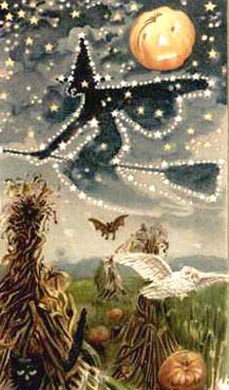
Has an attitude
Casts nasty spells
Has warts and a crooked nose
Often lives alone with many cats
The Priestess Witch
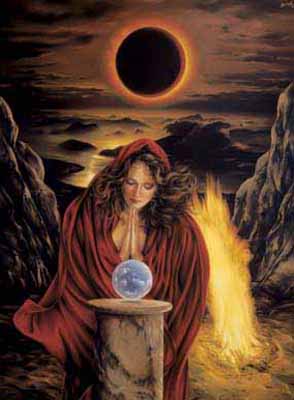
Wants to help everyone.
You can feel her power and energy.
There may be more to her than meets the 'eye'.
Powerful, sexy, alluring, always slim, gorgeous, long hair.
The Garden Variety Halloween Witch
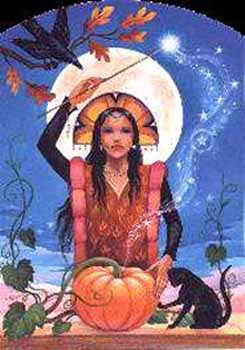
Dressed in black, long dark hair,
Says she is spiritual, but one has to wonder
if she knows the meaning of the word!
Day 10 - October 30 - Magic Day
You are the Magician.
The Magic is in your DNA

Awaken it!
There is Magic in the Grids.
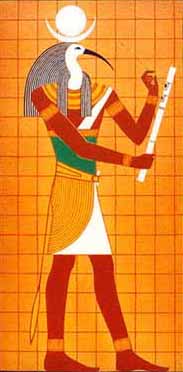
They are your Akashic Records,
the memories of all you are,
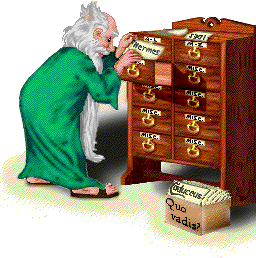
waiting for you to access them.
Here is your Book of Creation.

Take it and use this knowledge to find
all that you were
all that you are
all that will become
to heal your soul,
and find your way Home.
Days 11 - Halloween - Samhain

Halloween's origins date back to the ancient Celtic festival of Samhain (pronounced sow-in). It is the time between Samhain (pronounced "Sow-in" in Ireland, Sow-een in Wales, "Sav-en" in Scotland or even "Sam-haine" in non Gaelic speaking countries) and Brigid's Day "the period of little sun." Thus, Samhain is often named the "Last Harvest" or "Summer's End". The Earth nods a sad farewell to the God.
Symbolism of Samhain:
Third Harvest, the Dark Mysteries, Rebirth through Death.
Symbols of Samhain:
Gourds, Apples, Black Cats, Jack-O-Lanterns, Besoms.
Herbs of Samhain:
Mugwort, Allspice, Broom, Catnip, Deadly Nightshade, Mandrake, Oak leaves, Sage and Straw.
Foods of Samhain:
Turnips, Apples, Gourds, Nuts, Mulled Wines, Beef, Pork, Poultry.
Incense of Samhain:
Heliotrope, Mint, Nutmeg.
Colors of Samhain:
Black, Orange, White, Silver, Gold.
Stones of Samhain:
All Black Stones, preferably jet or obsidian.
Samhain Ritual
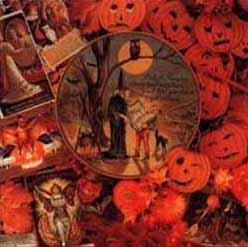
Samhain Ritual
While almost all Celtic based traditions recognize this Holiday as the end of the "old" year, some groups do not celebrate the coming of the New Year until Yule. Some consider the time between Samhain and Yule as a time which does not even exist on the Earthly plane. The "time which is no time" was considered in the old days to be both very Magickal and very dangerous. Even today, we celebrate this holiday with a mixture of joyous celebration and 'spine tingling" reverence.
The Celts, who lived 2,000 years ago in the area that is now Ireland, the United Kingdom, and northern France, celebrated their New Year on November 1.
This day marked the end of summer and the harvest and the beginning of the dark, cold winter, a time of year that was often associated with human death.
Celts believed that on the night before the New Year, the boundary between the worlds of the living and the dead became blurred.
On the night of October 31, they celebrated Samhain, when it was believed that the ghosts of the dead returned to Earth. In addition to causing trouble and damaging crops, Celts thought that the presence of the otherworldly spirits made it easier for the Druids, or Celtic priests, to make predictions about the future.
For a people entirely dependent on the volatile natural world, these prophecies were an important source of comfort and direction during the long, dark winter.
To commemorate the event, Druid priests built huge sacred bonfires, where the people gathered to burn crops and animals as sacrifices to the Celtic deities.
During the celebration, the Celts wore costumes, typically consisting of animal heads and skins, and attempted to tell each other's fortunes.
When the celebration was over, they re-lit their hearth fires, which they had extinguished earlier that evening, from the sacred bonfire to help protect them during the coming winter.
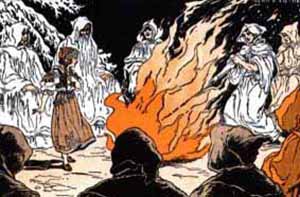
By A.D. 43, Romans had conquered the majority of Celtic territory. In the course of the four hundred years that they ruled the Celtic lands, two festivals of Roman origin were combined with the traditional Celtic celebration of Samhain.
The first was Feralia, a day in late October when the Romans traditionally commemorated the passing of the dead. The second was a day to honor Pomona, the Roman goddess of fruit and trees.
The symbol of Pomona is the apple and the incorporation of this celebration into Samhain probably explains the tradition of "bobbing" for apples that is practiced today on Halloween.
By the 800s, the influence of Christianity had spread into Celtic lands. In the seventh century, Pope Boniface IV designated November 1st 'All Saints' Day', a time to honor saints and martyrs.
It is widely believed today that the pope was attempting to replace the Celtic festival of the dead with a related, but church-sanctioned holiday.
The celebration was also called All-hallows or All-hallowmas (from Middle English Alholowmesse meaning All Saints' Day) and the night before it, the night of Samhain, began to be called All-hallows Eve and, eventually, Halloween.
Even later, in A.D. 1000, the church would make November 2 All Souls' Day, a day to honor the dead. It was celebrated similarly to Samhain, with big bonfires, parades, and dressing up in costumes as saints, angels, and devils.
Together, the three celebrations, the eve of All Saints', All Saints', and All Souls', were called Hallowmas.
Halloween is the eve of Hallowmas, better know to modern Christians as All Saints' Day. Hallowmas celebrates God's harvesting into heaven the faithful of every age, culture and walk of life. It is a day of glorious rejoicing.
Saints are people who, by their joyful service, have extended the love of God to others. The martyrologies, the list of the saints officially honored by the church, contains over 10,000 names - and those are only the saints we know of.
All Saints' Day also remembers those holy people whom no one but God any longer knows. The reading for the day from Revelation describes a great multitude that no one can count.
The American tradition of "trick-or-treating" probably dates back to the early All Souls' Day parades in England. During the festivities, poor citizens would beg for food and families would give them pastries called "soul cakes" in return for their promise to pray for the family's dead relatives. The distribution of soul cakes was encouraged by the church as a way to replace the ancient practice of leaving food and wine for roaming spirits. The practice, which was referred to as "going a-souling" was eventually taken up by children who would visit the houses in their neighborhood and be given ale, food, and money.
The tradition of dressing in costume for Halloween has both European and Celtic roots. Hundreds of years ago, winter was an uncertain and frightening time. Food supplies often ran low and, for the many people afraid of the dark, the short days of winter were full of constant worry.
On Halloween, when it was believed that ghosts came back to the earthly world, people thought that they would encounter ghosts if they left their homes. To avoid being recognized by these ghosts, people would wear masks when they left their homes after dark so that the ghosts would mistake them for fellow spirits. On Halloween, to keep ghosts away from their houses, people would place bowls of food outside their homes to appease the ghosts and prevent them from attempting to enter.
As European immigrants came to America, they brought their varied Halloween customs with them. Because of the rigid Protestant belief systems that characterized early New England, celebration of Halloween in colonial times was extremely limited there. It was much more common in Maryland and the southern colonies.
As the beliefs and customs of different European ethnic groups, as well as the American Indians, meshed, a distinctly American version of Halloween began to emerge. The first celebrations included "play parties," public events held to celebrate the harvest, where neighbors would share stories of the dead, tell each other's fortunes, dance, and sing. Colonial Halloween festivities also featured the telling of ghost stories and mischief-making of all kinds. By the middle of the nineteenth century, annual autumn festivities were common, but Halloween was not yet celebrated everywhere in the country.
In the second half of the nineteenth century, America was flooded with new immigrants. These new immigrants, especially the millions of Irish fleeing Ireland's potato famine of 1846, helped to popularize the celebration of Halloween nationally. Taking from Irish and English traditions, Americans began to dress up in costumes and go house to house asking for food or money, a practice that eventually became today's "trick-or-treat" tradition. Young women believed that, on Halloween, they could divine the name or appearance of their future husband by doing tricks with yarn, apple parings, or mirrors.
In the late 1800s, there was a move in America to mold Halloween into a holiday more about community and neighborly get-togethers, than about ghosts, pranks, and witchcraft. At the turn of the century, Halloween parties for both children and adults became the most common way to celebrate the day. Parties focused on games, foods of the season, and festive costumes. Parents were encouraged by newspapers and community leaders to take anything "frightening" or "grotesque" out of Halloween celebrations. Because of their efforts, Halloween lost most of its superstitious and religious overtones by the beginning of the twentieth century.
By the 1920's and 1930's, Halloween had become a secular, but community-centered holiday, with parades and town-wide parties as the featured entertainment. Despite the best efforts of many schools and communities, vandalism began to plague Halloween celebrations in many communities during this time.
By the 1950's, town leaders had successfully limited vandalism and Halloween had evolved into a holiday directed mainly at the young. Due to the high numbers of young children during the fifties baby boom, parties moved from town civic centers into the classroom or home, where they could be more easily accommodated.
Between 1920 and 1950, the centuries-old practice of trick-or-treating was also revived. Trick-or-treating was a relatively inexpensive way for an entire community to share the Halloween celebration. In theory, families could also prevent tricks being played on them by providing the neighborhood children with small treats. A new American tradition was born, and it has continued to grow.
Today, Americans spend an estimated $6.9 billion annually on Halloween, making it the country's second largest commercial holiday.
If you could be anyone who Halloween - who would it be?
Why do you suppose you picked that role?
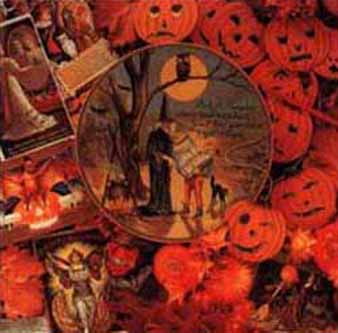 |
| Halloween Files |
November 1, 2002
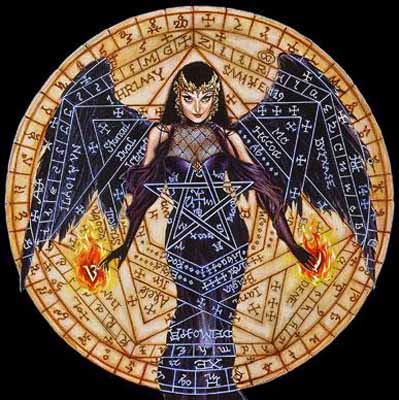
Day 12 - Day Of The Dead
In the Cycles we call Time, souls move from Life to Death to Rebirth. This cycle is said to link with a Judgment Day the balancing of the scales if the soul is to merge with its Twin Flame - to create reunion of the soul's twin aspects separated by the polarity of our reality, the electromagnetic energies that create the magic and illusion.
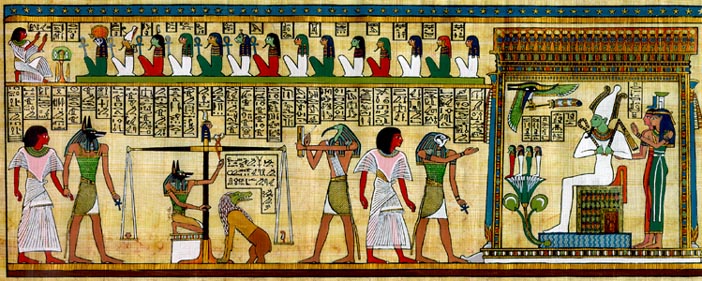
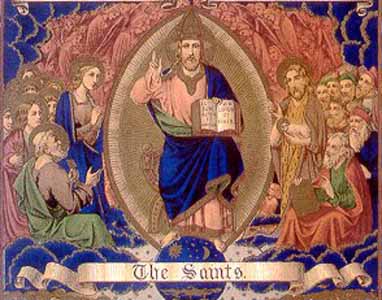
This was the day of the Celtic New Year.
A commemoration of "All Martyrs" began to be celebrated as early as the year 270, although no specific month or date are mentioned in existing records. The first trace of a general celebration on a specific day is attested in Antioch on the Sunday after Pentecost. There is mention of a common day in a sermon of St. Ephrem the Syrian (373), and the custom is also referred to in the 74th Homily of St. John Chrysostom (407 AD), who speaks of a "feast of martyrs of the whole world." As early as 411 AF, there is found among the Chaldean Christians a general commemoration of all Confessors (Commemoratio Confessorum), celebrated on the Friday after Easter.
When he was forbidden to do so, he decided to dedicate it to "All Saints," so that if his wife were one of the righteous, she would also be honored whenever the feast was celebrated.
According to tradition, it was Leo who expanded the feast from a commemoration of All Martyrs to a general commemoration of All Saints, whether martyrs or not.
This Sunday marks the close of the Paschal season. To the normal Sunday services are added special scriptural readings and hymns to all the saints (known and unknown) from the Pentecostarion. The Sunday following All Saints Sunday (i.e., the second Sunday after Pentecost) is set aside as a commemoration of all locally venerated saints, such as "All Saints of America", "All Saints of Mount Athos", etc. The third Sunday after Pentecost may be observed for even more localized saints, such as "All Saints of St. Petersburg", or for saints of a particular type, such as "New Martyrs of the Turkish Yoke." In addition to these Sundays, Saturdays throughout the year are days for general commemoration of all saints.
The Western Christian holiday of All Saints Day (called Festum omnium sanctorum in Latin) falls on November 1, followed by All Souls' Day on November 2, and is a Holy Day of Obligation in the Latin Rite Roman Catholic Church, with a vigil. This feast used to have an octave. The octave was abrogated in 1955 along with other octaves.
The origin of the festival of All Saints as celebrated in the West dates to May 13 in 609 or 610 (the day being more important than the year), when Pope Boniface IV consecrated the Pantheon at Rome to the Blessed Virgin and all the martyrs; the feast of the dedicatio Sanctae Mariae ad Martyres has been celebrated at Rome ever since.
The chosen day, May 13, was a pagan observation of great antiquity, the culmination of three days of the Feast of the Lemures, in which were propitiated the malevolent and restless spirits of all the dead. The medieval liturgiologists based the idea that this ">Lemuria festival was the origin of that of All Saints on their identical dates and on the similar theme of all the dead.
The feast of All Saints, on its current date, is traced to the foundation by Pope Gregory III (731-741) of an oratory in St Peter's for the relics "of the holy apostles and of all saints, martyrs and confessors, of all the just made perfect who are at rest throughout the world", with the day moved to November 1. This usually fell within a few weeks of the Celtic pagan holiday of Samhain, which had a theme similar to that of Lemuria, but which was also a harvest festival.
The Irish, whose holiday Samhain had been, did not maintain this November 1 date for All Hallows Day, as extant historical documents attest that the celebration of All Hallows in Ireland took place in the spring: "...the Felire of Oengus and the Martyrology of Tallaght prove that the early medieval churches [in Ireland] celebrated the feast of All Saints upon 20 April." A November festival of all the saints was already widely celebrated on November 1 in the days of Charlemagne. It was made a day of obligation throughout the Frankish empire in 835, by a decree of Louis the Pious, issued "at the instance of Pope Gregory IV and with the assent of all the bishops," which confirmed its celebration on the 1st of November. The octave was added by Pope Sixtus IV (1471-1484).
The festival was retained after the Reformation in the calendar of the Church of England and in many Lutheran churches. In the Lutheran churches, such as the Church of Sweden, it assumes a role of general commemoration of the dead. In the Swedish calendar, the observance takes place on the first Saturday of November. In many Lutheran Churches, it is moved to the first Sunday of November. It is also celebrated by other Protestants of the English tradition, such as the United Church of Canada and the Wesleyan Church.
In the United Methodist Church, All Saint's Day is on the first Sunday in November. It is held to remember all those that have passed away from the local church congregation. A candle is lit by the Acolyte as each person's name is called out. Then, a liturgical prayer is offered for each soul in Heaven.
In Poland, the Czech Republic, Sweden, Finland, Slovenia, Slovakia, Lithuania, Croatia, Austria, Romania, Hungary and Germany, the tradition is to light candles and visit the graves of deceased relatives. In the Philippines, the day is spent visiting the graves of deceased relatives, where they offer prayers, lay flowers, and light candles.
In English-speaking countries, the festival is traditionally celebrated with the hymn "For All the Saints" by William Walsham How. The most familiar tune for this hymn is Sine Nomine by Ralph Vaughan Williams.
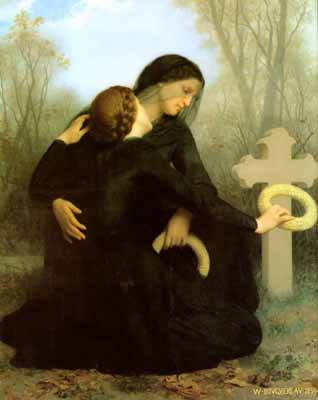
In 1000 A.D. the church made November 2 All Souls' Day, a day to honor the dead. It was celebrated similarly to Samhain, with big bonfires, parades, and dressing up in costumes as saints, angels, and devils.
In Western Christianity, All Souls' Day commemorates the faithful departed. This day is observed in the Roman Catholic Church, churches of the Anglican Communion, Old Catholic Churches, and to some extent among Protestants. The Eastern Orthodox Church observes several All Souls' Days during the year. The Roman Catholic celebration is based on the doctrine that the souls of the faithful which at death have not been cleansed from venial sins, or have not fully atoned for mortal sins, cannot attain the beatific vision in heaven yet, and that they may be helped to do so by prayer and by the sacrifice of the Mass.
All Souls' Day is also known as the Feast of All Souls, Commemoration of all the Faithful Departed (from the Latin Commemoratio omnium Fidelium Defunctorum), Day of the Dead (in Mexico), and Defuncts' Day (in Hungary, France, Italy, and Ecuador).
The Western celebration of the feast falls on November 2 and follows All Saints' Day, which commemorates the departed who have attained the beatific vision. Since the liturgical reforms of the Second Vatican Council the feast is celebrated on November 2 even in years when that date falls on a Sunday. In the traditional Latin rite, the observance is transferred to November 3 if November 2 is a Sunday, as the Mass for the dead and its black vestments is seen as inconsistent with the joyous nature of Sunday. It continues to be transferred in parts of the Anglican Communion.
The Eastern church celebrates several days throughout the year, most falling on Saturdays, because of Jesus' resting in the tomb on Saturday.
THANK YOU

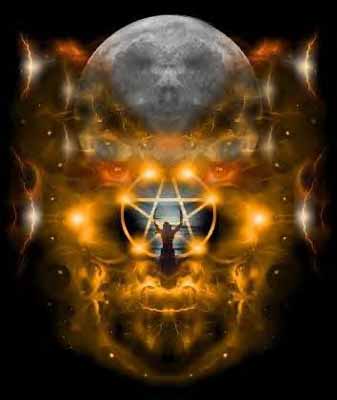
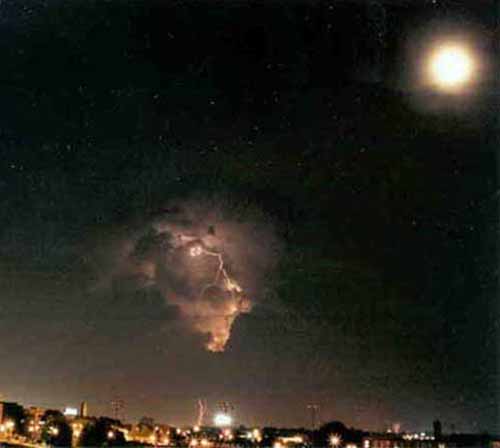
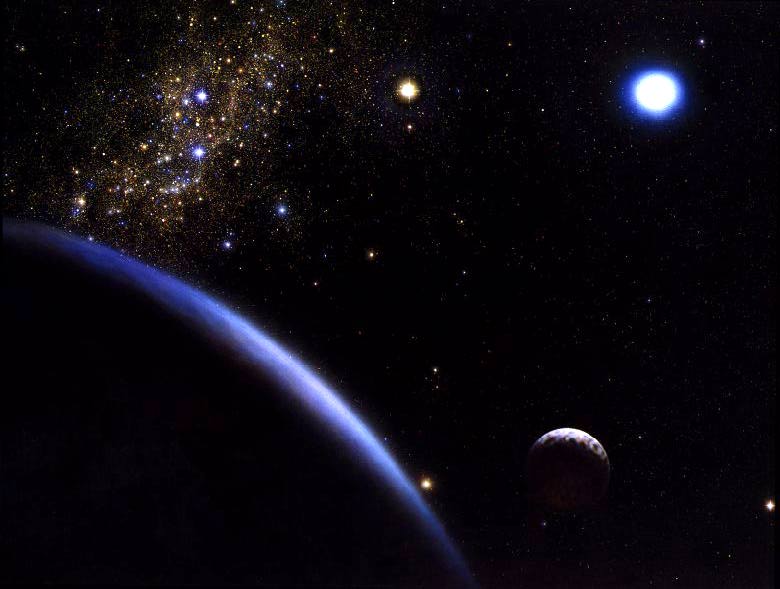
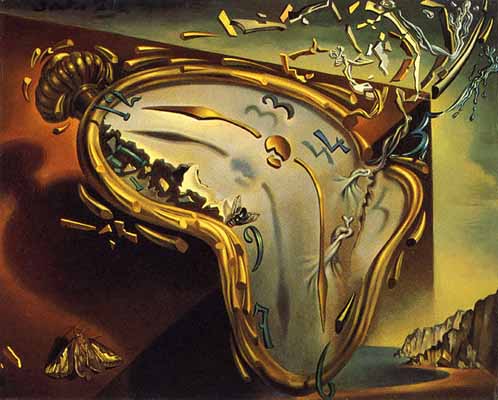
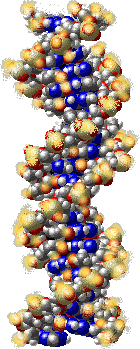

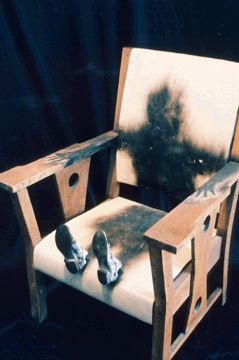
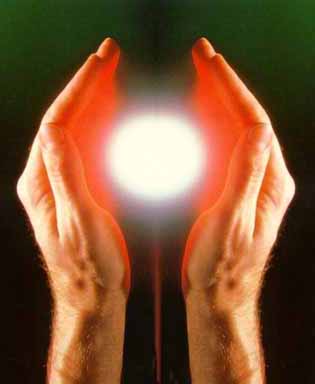
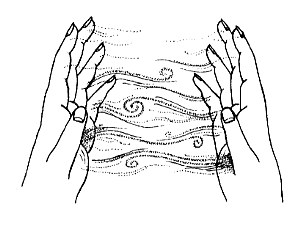
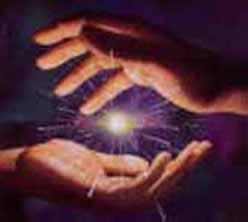
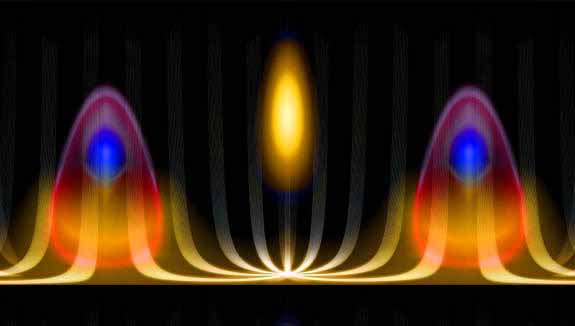


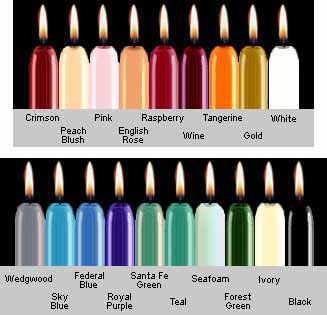


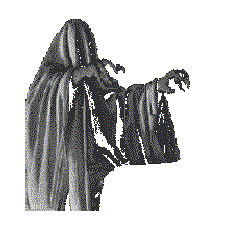
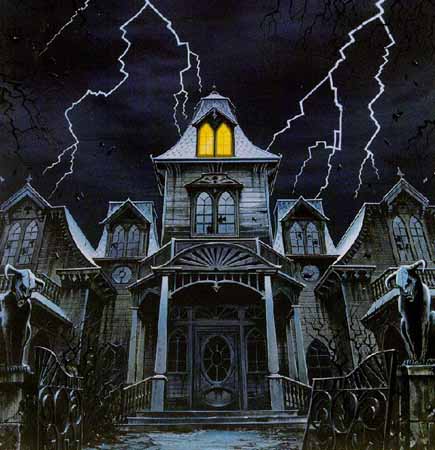

No comments:
Post a Comment